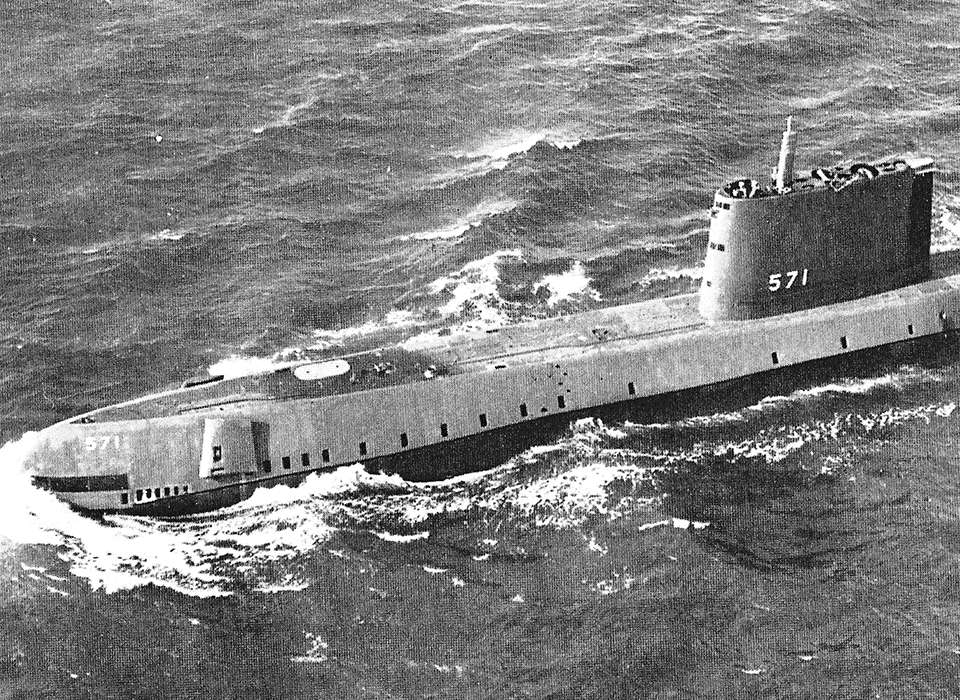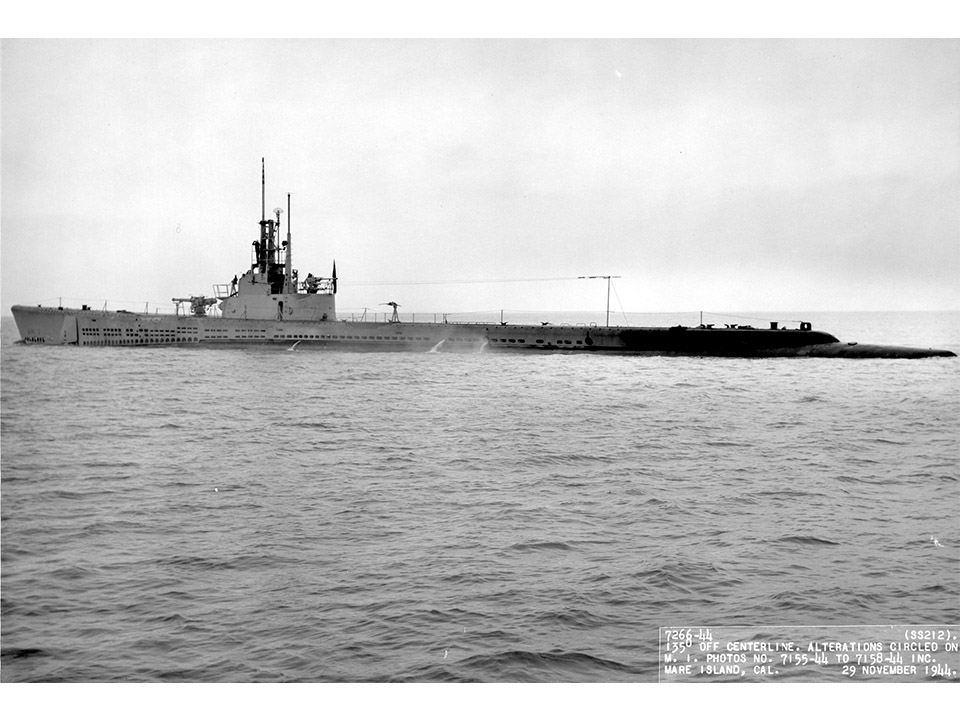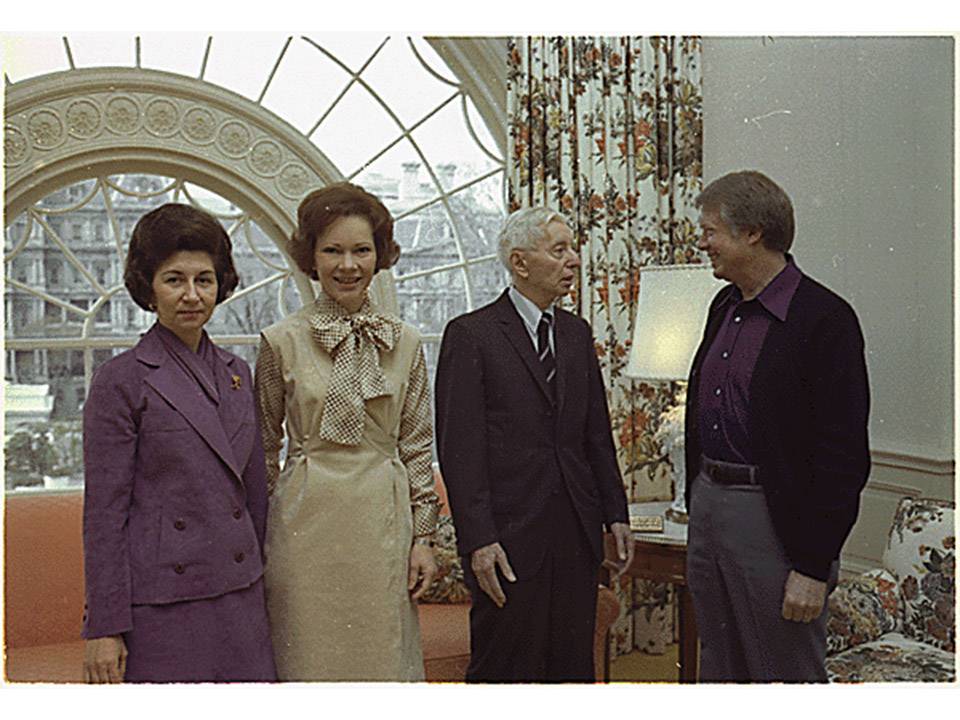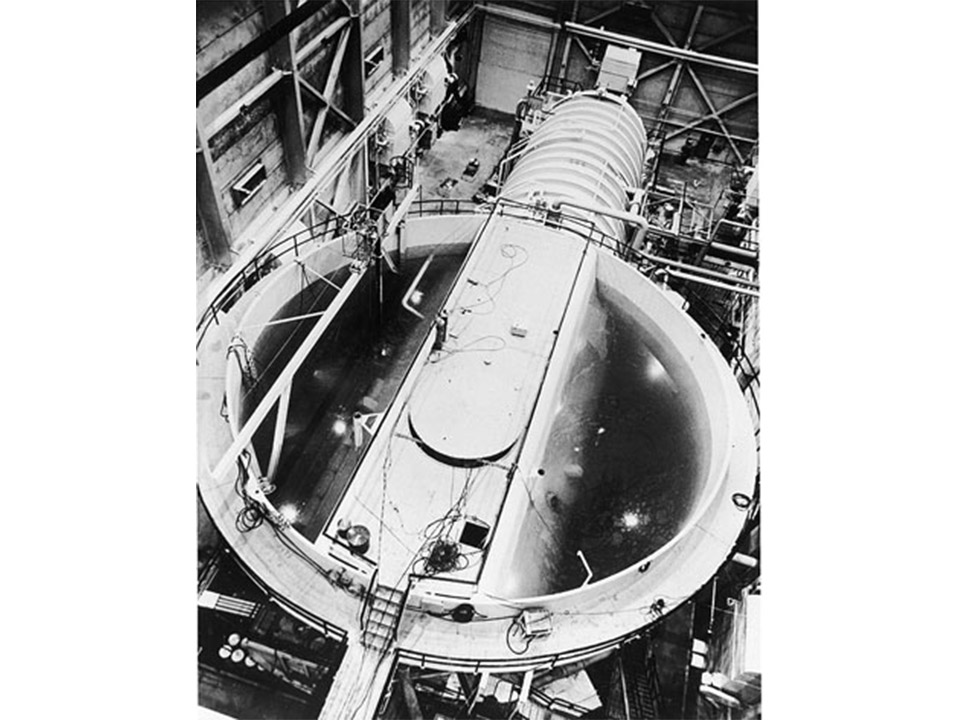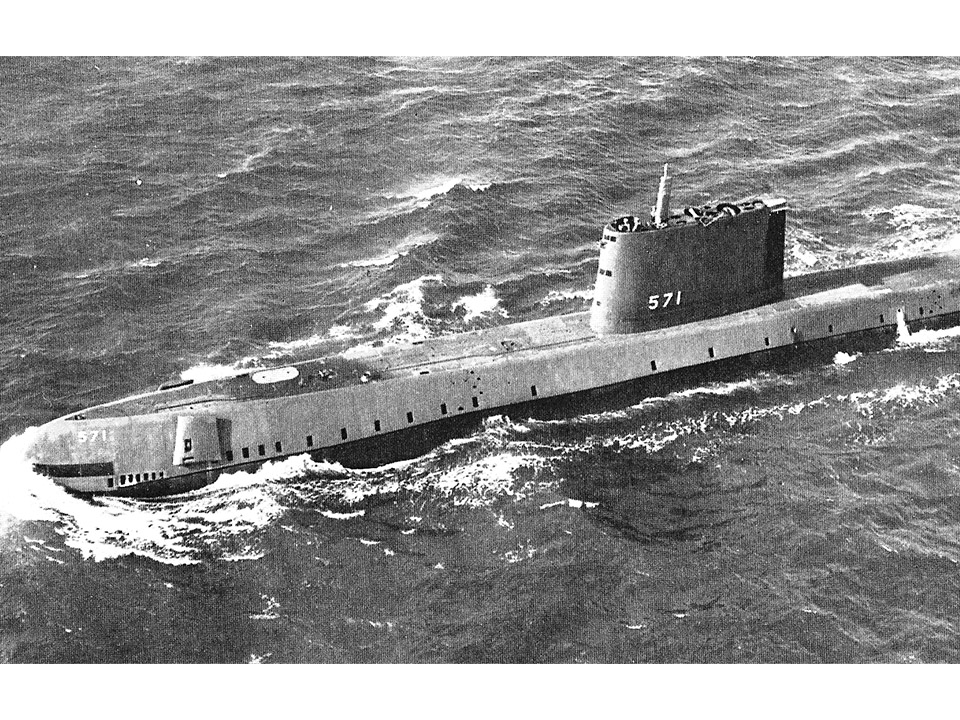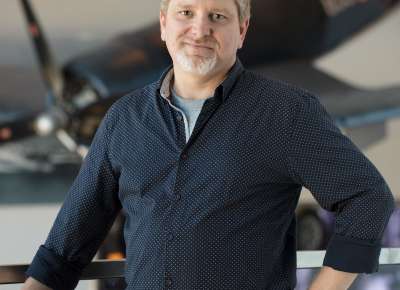As we approach the 75th anniversary of the culmination of the Manhattan Project and the Trinity test in July 1945, followed by the detonation of the atomic bombs over Hiroshima and Nagasaki in August of 1945, it is a time to reflect on the legacy of the huge scientific effort.
One little understood part of the legacy is today’s submarine fleet.
In World War II, submarines were very important. At the beginning of the war German U Boats exacted a huge cost in lives and goods in the Battle of the Atlantic. They ranged undersea as the eastern seaboard and the Gulf of Mexico. These submarines utilized what today we might call a hybrid engine. They had diesel engines that generated electricity to charge banks of batteries. The diesel engine requires oxygen, and would quickly use all the oxygen in the submarine if run while underwater. So the vessel would run its engine while on the surface, and then use the batteries while submerged. The radio often would only work while surfaced too, and thus the U Boats had to surface regularly. This was to their detriment as Allied radar improved, and the Allies developed planes that could cross the Atlantic with the convoys.
American submarines used the same hybrid engine system. The Gato class had four diesel engines that could power the vessel on the surface at up to 20 knots, and an array of batteries and two electric motors that powered the vessel underwater at up to nine knots. The sub could stay submerged for 48 hours, and had a patrol duration of 75 days. Later classes of submarines improved depth and other features, but the speed and duration remained the same.
At the end of the war, the US Navy made plans to improve their fleet using technology developed with government funding—nuclear power. In 1946 the Clinton Engineering Laboratory (now Oak Ridge National Laboratory), opened a section to study nuclear powered electrical generation. An officer in the US Navy, Hyman Rickover, who was at that time Inspector General of the 19th Fleet, applied for a position there, with the support of his wartime supervisor, Rear Admiral Earle Mills. He wanted to adapt technology from the Manhattan Project for use in submarines.
Rickover had been born in Poland in 1900, to his parents Abraham and Rachel Rickover. His family immigrated in 1906 to avoid the pogroms and chaos of the Russian Revolution. They moved to Chicago, where Abraham worked as a tailor. Hyman attended grammar school and worked in tailor shops as an assistant, until he graduated high school with honors and got a job as a telegraph boy. In this capacity he got to know his local Congressman, who nominated him to attend the US Naval Academy. Rickover passed the entrance exam and was accepted. He graduated from the Academy in 1922 and joined the crew of a destroyer as an ensign.
Quickly impressing his superiors with hard work and intelligence, he was promoted, and then attended the Naval Postgraduate School, and finally went to Columbia University, where he received an MS in Electrical Engineering in 1930. After graduation he served on submarines, worked in an inspector general’s office, and then had a brief command (three months) on a minesweeper where he saw the Chinese-Japanese conflict firsthand. His command was cut short by his promotion to lieutenant commander and engineering officer, and he soon moved to the Bureau of Engineering in Washington, D.C. There he worked as assistant chief of the Electrical section of the Bureau of Engineering. This experience is why he was chosen in April 1942 to manage repairs to the electrical plant of the USS California in Pearl Harbor. He had been promoted to commander that January, and in June of 1942 was appointed temporary captain of the ship. In 1944 he took charge of turning around an inefficient supply depot, and then was given command of a ship repair facility in Okinawa.
Rickover arrived at Clinton Engineering excited about the possibility of nuclear power for the Navy. However, unlike his superiors, who saw nuclear plants in Destroyers and Battleships, he thought they should go first into submarines. In submarines they would obviate the need for engines, and allow for longer times submerged and on patrol. His advocacy for this vision irritated his superiors, and he was recalled from Tennessee. He was assigned "advisory duties" with an office in an abandoned ladies' room in the Navy Building. Rickover responded by going around the chain of command, meeting directly with Fleet Admiral Nimitz, who was Chief of Naval Operations. Nimitz, with his submarine experience, agreed with Rickover, and sent a recommendation for the plan to the Secretary of the Navy.
Rickover was appointed head of a new office in the Bureau of Ships, the Nuclear Power Division. His superior officer was his old mentor, Earle Mills, who led the Bureau. He worked with Oak Ridge (it now had its new name), to develop a school of nuclear engineering, and was on the new Atomic Energy Commission to plan and develop appropriate reactors. The decision was made to create a new submarine, powered by nuclear energy—the USS Nautilus.
They decided to use a pressurized water reactor. In such a reactor the water is contained under pressure, and not allowed to boil. Its limitations are that it can’t heat the water as hot as a boiling water reactor, and that it requires highly enriched uranium. The advantages are that it can be quieter and smaller, and run for longer without replacing the fuel. In this reactor the nuclear fission creates heat which turns the enclosed liquid water into steam, the steam passes through a turbine that generates electricity, and then cools and returns to a liquid state. Planning and design took about two years.
In 1951, construction of the USS Nautilus received congressional approval. On January 17, 1955, it cast away and went for its first cruise. It went from Connecticut to Puerto Rico, submerged for the entire trip, going 1,200 nautical miles in 90 hours. Over the next two years the crew investigated the capabilities of the ship, traversing the globe, and traveling under the frozen North Pole. It could travel at 23 knots underwater.
The USS Nautilus influenced all subsequent naval designs. The world’s powers today all use nuclear power plants very similar to those of the Nautilus. The US Navy, and many of the world’s other navies, also use nuclear plants in their large surface ships, including battleships, carriers, and even icebreakers. The Cold War saw the deployment of nuclear missiles on nuclear powered submarines, leading to a roving and hidden armory of destruction. Even commercial nuclear power for electricity generation shows the legacy of that pressurized water reactor that moved the USS Nautilus. Less change and innovation has taken place in the last 65 years of nuclear power than did in the first ten.
Today the Nautilus is a museum of submarine history operated by the Naval History and Heritage Command in New London, Connecticut. It was decommissioned in March of 1980.

Medical Innovations: Polio
Before he took office and faced the challenges of the Great Depression and World War II, FDR faced the challenge of Polio. This disease was sometimes deadly and always feared in the US during the first half of the twentieth century. Part of FDR's legacy is the Polio vaccine, released in 1955.
This article is part of an ongoing series commemorating the 75th anniversary of the end of World War II made possible by Bank of America.
Rob Wallace
Rob runs teacher workshops and develops curriculum, including Real World Science, funded by The Northrop Grumman Foundation.
Cite this article:
MLA Citation:
APA Citation:
Chicago Style Citation:
